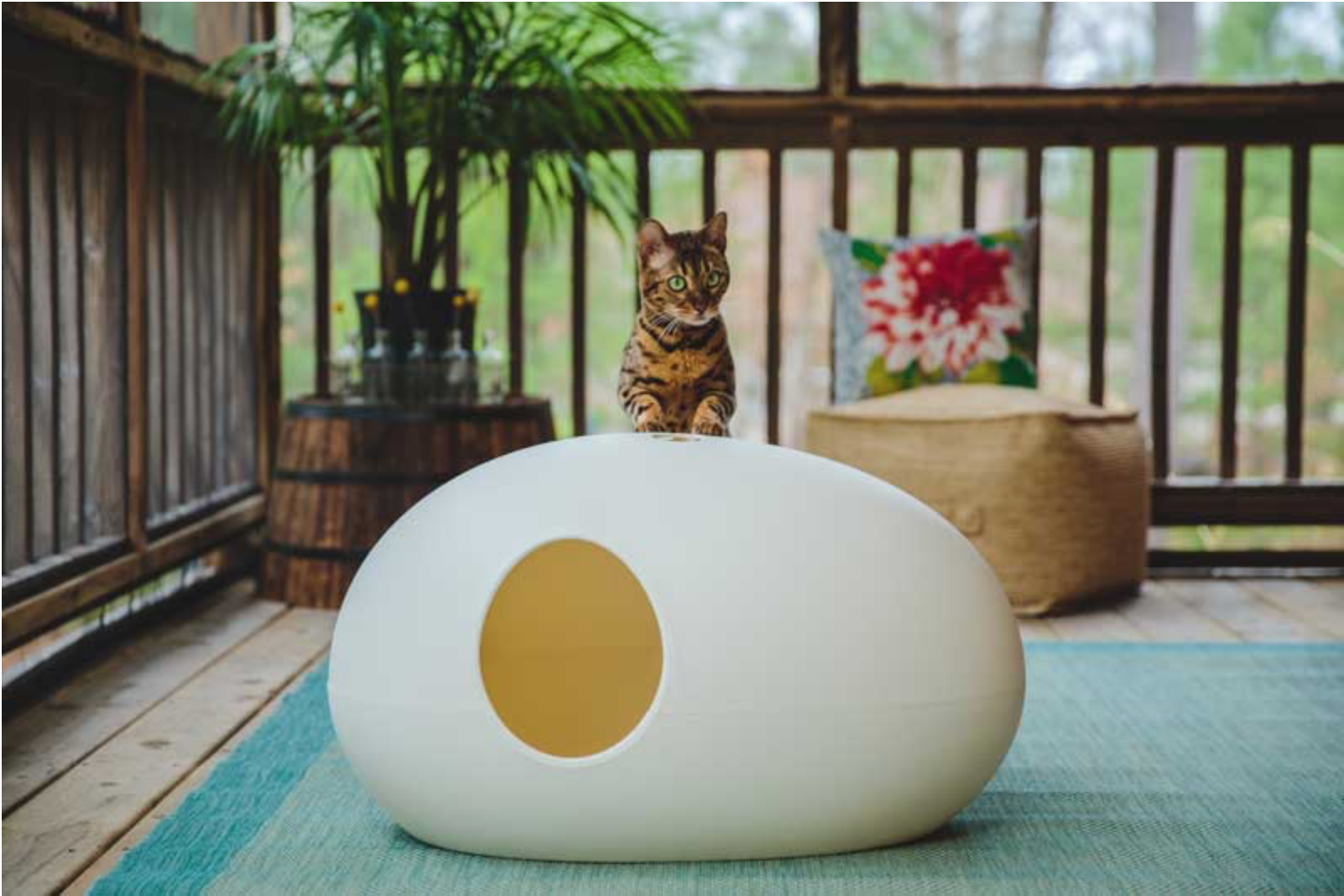How do I care for my long or short-haired cat’s coat? The most important information, great tips and grooming products.
What is the best cat litter?
The choice of cat litter is huge. Mineral cat litter, silica litter, litter made from plant fibres, fine or coarse-grained, with or without fragrance, recyclable and the list goes on. The best cat litter is always the one that is accepted by your cat without reservation. The most expensive cat litter is useless if the cat becomes unclean and no longer uses the litter tray.
It’s not easy to make the right choice, so I’ve put together a short overview of all the important facts here. Thank goodness our Gisela is quite uncomplicated. First of all, we gave her a mineral cat litter, which worked immediately. It clumps very well and the litter very rarely needs to be changed completely. We made sure that it was unscented. Perfume additives can be perceived as pleasant by us human noses, but whether the cat sees it that way is questionable.
Poopoopeedo is a large, practical and beautiful litter tray.
The mineral cat litter is very popular as a classic clumping litter. The litter is available in different grain sizes, different compositions and with or without fragrances. The urine is well bound (liquid and odour) and the clumps can be easily removed from the litter tray. The mineral litter is very economical and lasts a long time, as only the clumps need to be removed from the toilet. It is therefore also quite inexpensive to buy. Anyone who has to do the shopping on foot or by bike will find the heavy weight of the litter a major disadvantage. It is also not the most environmentally friendly option. Mineral litter is not biodegradable and its clay components are extracted in open-cast mines. Pouring the litter into the toilet also creates a lot of dust, which can be harmful to health.
Compared to mineral cat litter, silica litter is much lighter. This is an advantage when buying, as the light crumbs tend to stick to the cat’s paws and spread around the home, which is a disadvantage.
Unpleasant odours bind quite well without the addition of fragrances. Another advantage is that the silicate litter creates less dust when the toilet is filled.
Unfortunately, the silicate litter does not clump, but the litter absorbs the cat’s urine, the heavier pellets settle at the bottom of the toilet and remain there until the entire litter is replaced. The silicate litter is also noisy when buried. If you are a light sleeper, this can be a problem at night in small flats. Another disadvantage is the higher price.
There are many different versions, from wood or plant fibres to corn kernels and paper litter. The advantages are all pretty much the same. They clump well, making the litter tray easy to clean. Even without fragrances, they absorb odours well, are light in weight and do not create dust. They are made from renewable raw materials and can be disposed of in the organic waste bin. Here too, the disadvantage is that the lighter weight means that the litter will be spread around the home by the cat’s paws. In addition, litter made from recycled paper may contain glue or printing ink and chemical additives.
How can I avoid cat litter crumbling?
Whether and how much cat litter is scrapped out of the toilet can have many causes:
- Check the fill level in the litter tray. Too little litter can be the cause, as can too much litter.
- A litter tray mat can catch a lot of litter.
- If the cat has diarrhoea or a bladder infection, this can lead to excessive scratching when going to the toilet.
- A large litter tray with a bonnet keeps the litter inside
- The cat litter is too light, perhaps a change of litter will help
However, please do not experiment too much and too hectically one after the other. Cats are creatures of habit and need time to get used to new things.
You can find more information on choosing the right litter tray here.

Fur care for Cats

A very warm welcome
Felt cat caves with latex cushionsI am delighted that you have found our blog here. In future, everything here will revolve around dogs, cats and the people that go with them. We will be discussing all topics relating to our 4-legged friends. I'm looking forward to...

How do I keep my pet cat busy?
How do I keep my pet cat occupied? Outdoor cats never get bored, but real house cats need to be kept busy so that they don’t get bored.

A cat moves in – the best tips for settling in
The time has finally come: a cat is moving in. You can look forward to a few intense and exciting weeks. Whether it’s a kitten or a senior, a breeder’s cat or a rescue, your new family member will take your heart and home by storm.














Recent Comments